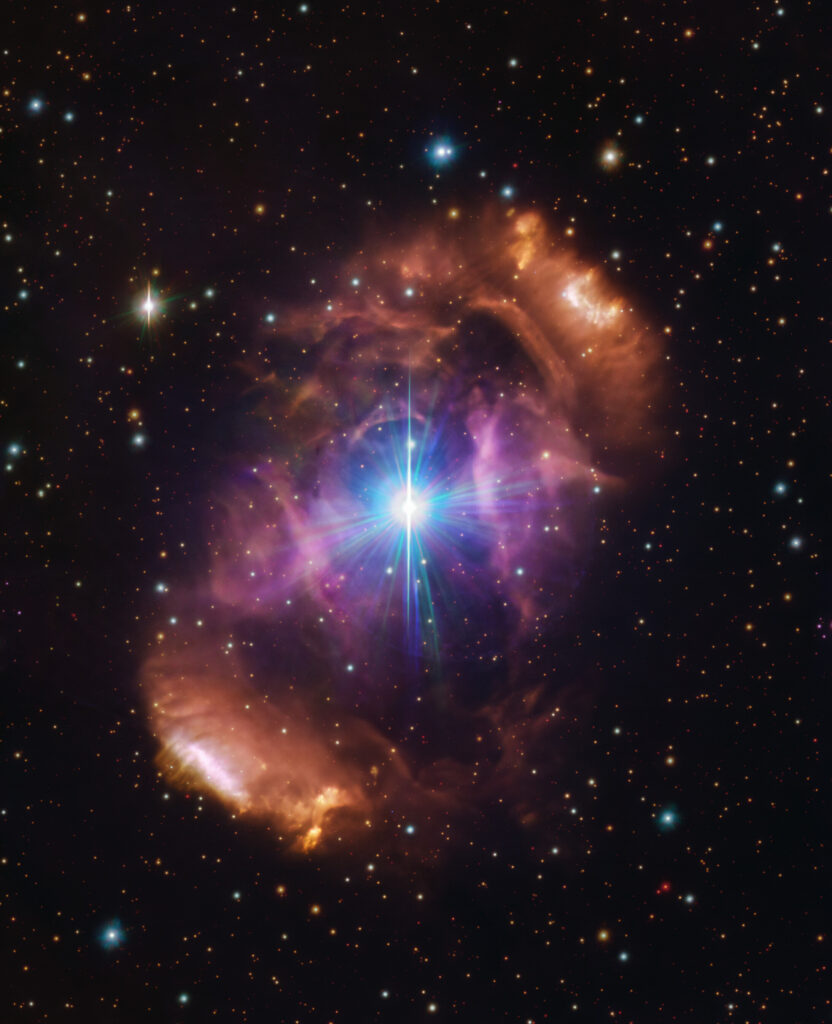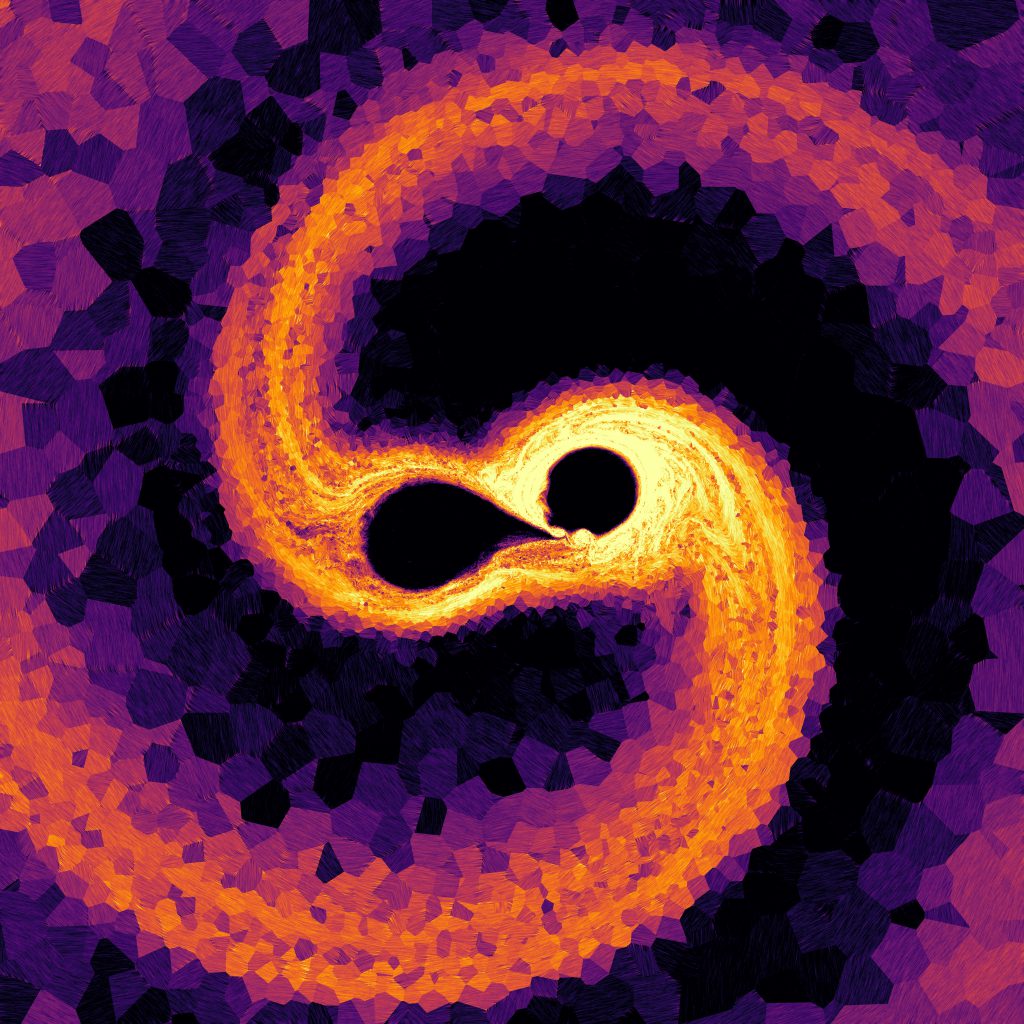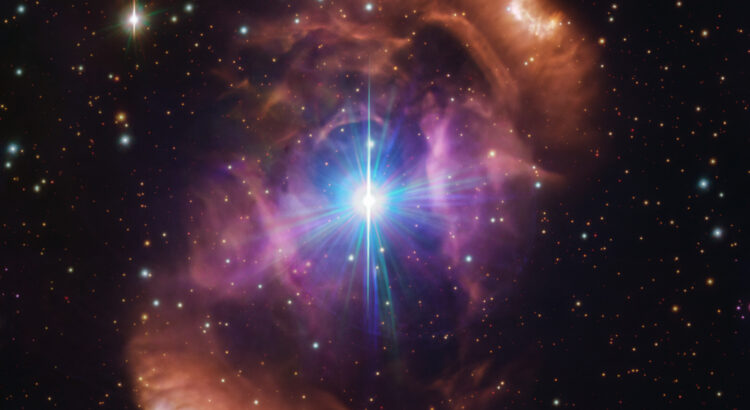An international team of astronomers have solved a stellar mystery utilizing new data from the European Southern Observatory (ESO), and confirm prior research by HITS researchers on how some massive stars acquired their strong magnetic fields.
Astronomers and astrophysicists are used to think in long timescales, from millions to billions of years. Sometimes, however, they are surprised to observe phenomena that have occurred only several thousand years ago – just a blink of an eye in the evolution of stars. This rare chance came for a team of astronomers when they spotted a pair of stars at the heart of the Dragon’s Egg nebula, a stunning cloud of gas and dust. One star appears younger and, unlike the other, it is magnetic. Moreover, the nebula is only 7500 years old, containing large amounts of nitrogen, carbon, and oxygen; it is thus a telltale sign of a recent dramatic event.
Solving a breathtaking puzzle: from 3 to 2 plus a heavy metal cloud

The system, HD 148937, is located about 3800 light-years away from Earth in the direction of the Norma constellation. “I was struck by how special this system seemed,” says Abigail Frost (ESO), lead author of the study now published in Science. To unravel the mystery, the team assembled nine years’ worth of data from instruments on ESO’s Very Large Telescope Interferometer (VLTI), located in Chile’s Atacama Desert, and the FEROS instrument at ESO’s La Silla Observatory. “After a detailed analysis, we could determine that the more massive star appears much younger than its companion, which doesn’t make any sense since they should have formed at the same time,” Frost says.
The age difference — one star appears to be at least 1.5 million years younger than the other — suggests something must have rejuvenated the more massive star. The hypothesis is that there were originally three stars in the system. “The two inner stars merged in a violent manner, creating a magnetic star and throwing out some material, which created the nebula”, says Hugues Sana (KU Leuven, Belgium), the principal investigator of the observations. “The more distant star formed a new orbit with the newly merged, now-magnetic star, creating the binary we see today at the center of the nebula.”
Evidence of how magnetic fields emerge in massive stars
The study helps solve a long-standing mystery in astronomy: how do some ~10% of massive stars get their strong surface magnetic fields. While magnetic fields are a common feature of low-mass stars like our Sun, more massive stars cannot sustain magnetic fields in the same way. Yet some massive stars are indeed magnetic. It was suggested that strong magnetic fields might be produced when two stars collide.

In 2019, HITS researchers succeeded in testing this hypothesis. Using a novel simulation code on a large compute cluster, they were able to simulate the merger of two massive stars and published their findings in Nature. “Our simulations showed that the generated magnetic fields might even be sufficient to explain the exceptionally strong magnetic fields inferred to exist in magnetars”, says HITS group leader Fabian Schneider, who is also one of the authors of the new study. “In the collision of two stars, merger debris is scattered around the merger remnant and should form a nebula that is visible for a short time. Such a nebula around an apparently too young and magnetic star is a smoking-gun signal for the merger hypothesis, and we have finally found it.”
This is the first time researchers have found such direct evidence of magnetism in massive stars. And even more exciting for astronomers: In the case of HD 148937, the merger must have happened recently. “Magnetism in massive stars may not last very long compared to the lifetime of the star, so it seems we have observed this rare event very soon after it happened,” first author Abigail Frost adds.
See the ESO press release for more information: https://www.eso.org/public/news/eso2407/
(Photos of the VLT/VLTI), and also the HITS news: https://www.h-its.org/2024/04/12/stellar-merger/
Publication:
Frost et al: “A magnetic massive star has experienced a stellar merger”. Science (www.science.org/doi/10.1126/science.adg7700)
